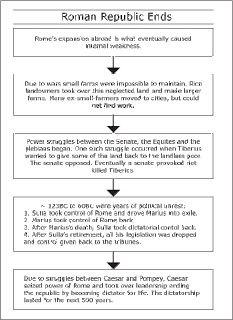As a teacher it is important to build checks and balances into your lesson plan that allow you to evaluate your students understanding and ability. After teaching a student how to accomplish a task, setting clear expectations for the assignment given, and giving an interactive example in class, it is important to test their independent ability. What can a student accomplish without your help and do they know the skill or information being taught well enough to take it with them for the future. This should be done in all areas of study.
Graphic organizers provide tools to create visual displays that depict relationships among and between various elements. Common names for graphic organizers are concept maps, mind maps, advance organizers, and mental models. When a student uses flash cards or takes notes to read back over, it is just stimulating one form of learning and often becomes a lost piece of information over time. Memorized information in itself is not necessarily the same as learned information. To truly learn a piece of information is to understand the material from all angles, create links to the way in which it effects and works with other things and to be able to apply it.
For example, here is a way in which students can use graphic organizers to go beyond memorization to deeper understanding and learning. If a young student is attempting to learn cause and effect in literature, graphic organizers can allow them to map out the separate events of a story in an organized manor so they are able to visualize how each event effects the next.
Graphic organizers can assist in the following:
- Analyzing: By critically examining details, processes, relationships, or meaning, better understanding is achieved. Teachers and students could use organizational charts, concept maps, or Venn diagrams as part of their analysis.
- Brainstorming: A problem solving technique where students are encouraged to spontaneously, quickly, and creatively share ideas while one person writes them down, often in the form of a web.
- Sequencing: Ideas or events are prioritized or ordered. Teachers sometimes use this technique to help students understand the relationship of events or the hierarchy of information. This often takes the form of a flow chart or outline.
HOW CAN YOU DEPICT STUDENT MISCONCEPTIONS OF KEY INFORMATION?
As mentioned above, graphic organizers are great ways for teachers to depict student misconceptions of key information. Graphic organizers are visual maps of your thoughts and the way in which they connect. There are many different ways to create graphic organizers but whatever format your students choose, as a teacher, graphic organizers are perfect tools to find students misconceptions.
No matter the shape, a teacher will be able to see where the disconnect it by viewing a graphic organizer and a student will be able to do the same.
HOW CAN STUDENTS CAPTURE AND TRANSFER BRAINSTORMING IDEAS INTO WRITTEN THOUGHTS?
One very effective use of graphic organizers is the organization of ideas when brainstorming. Here is an idea for a lesson plan to show this. Using the image of a caterpillar as a graphic organizer, you can have the class participate in a group brainstorming activity in writing and literature class. Each student can have a slice of the caterpillar to write an idea down on. You may even give each student 3 slices to write multiple ideas on. The slices will be color coded to represent the head, three parts of the body, and the end. To demonstrate the correct layout of a story with the introduction, body paragraphs, and conclusion you can have your students create a full caterpillar with their ideas.
Another way of using graphic organizers to capture ideas through brainstorming is through program based graphic organizers. These programs for your computers allow the teacher or student recorder to type in an idea of a students which will automatically create an icon and link to an additional icon for the next thought. These programs easily capture ideas and encourage students to add on to their peers thoughts. After the brainstorming session, students can review the ideas, modifying and rearranging them into meaningful groups, without having to re-enter the information. Once they have gotten their information to an organized place they can translate these idea maps into well organized writings.



This is really nice article for students ...The graphic organizers very helpful for students and teachers...The graphic organizers are perfect tools to find students misconceptions.Thanks for this posting ...
ReplyDeleteGraphic Organizers